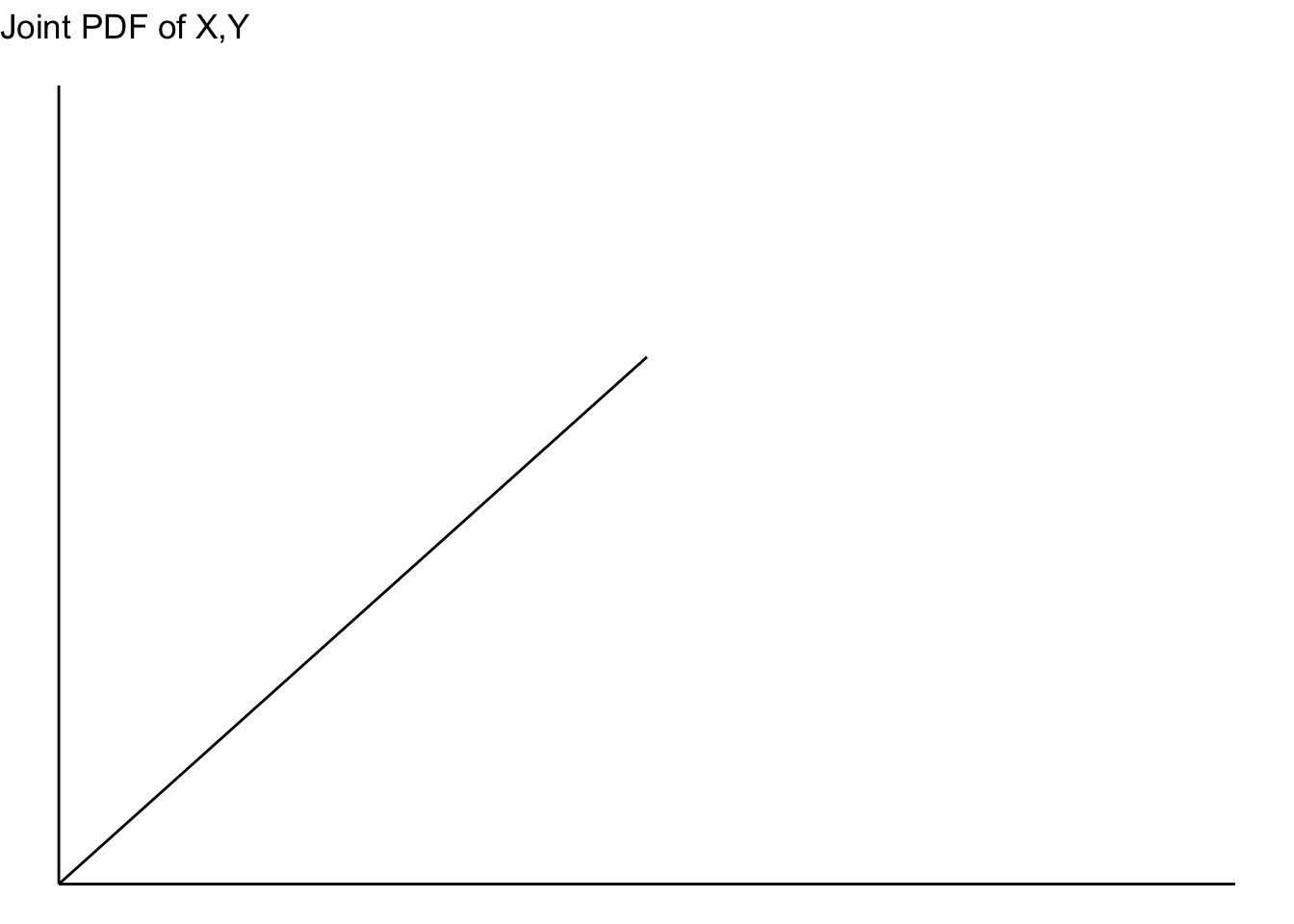4.6 Computing the CEF
- Suppose that random variables \(X\) and \(Y\) are jointly continuous, with joint density function given by,
\[ f(x,y) = \begin{cases} 2, & 0 \leq x \leq 1, 0 \leq y \leq x \\ 0, & otherwise \end{cases} \]
What does the joint PDF of this function look like?

4.6.1 Simple Quantities
To begin with, let’s compute the simplest quantities:
- What is the expectation of \(X\)?
- What is the expectation of \(Y\)?
- How would you compute the variance of \(X\)? (We’re not going to do it live).
4.6.2 Conditional Quantities
4.6.2.1 Conditional Expectation
And then, let’s think about how to compute the conditional quantities. To get started, you can use the fact that in week two, we already computed the conditional probability density function:
\[ f_{Y|X}(y|x) = \begin{cases} \frac{1}{x}, & 0 \leq y \leq x \\ 0, & \text{otherwise.} \end{cases} \]
With this knowledge on hand, compute the \(CEF[Y|X]\).
Once you have computed the \(CEF[Y|X]\), use this function to answer the following questions:
- What is the conditional expectation of \(Y\), given that \(X=x=0\)?
- What is the conditional expectation of \(Y\), given that \(X=x=0.5\)?
- What is the conditional expectation of \(X\), given that \(Y=y=0.5\)?
4.6.2.2 Conditional Variance
- What is the conditional variance function?4
- Which of the two of these has a lower conditional variances?
- \(V[Y|X=0.25]\); or,
- \(V[Y|X=0.75]\).
- How does \(V[Y]\) compare to \(V[Y|X=1]\)? Which is larger?
Take a moment to strategize just a little bit before you get going on this one. There is a way to compute this value that is easier than another way to compute this value.↩︎